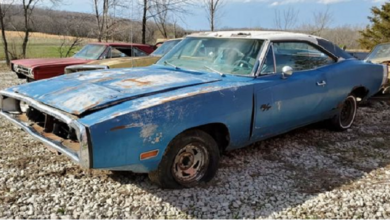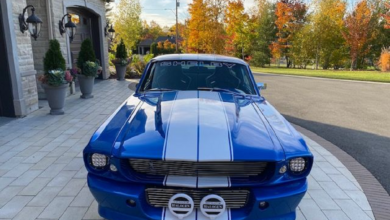A Close Look At The 1968 Chevrolet Camaro Z/28
Check the significance of the Z/28 on a Camaro with a major focus on the 1968 model.
Chevrolet knew exactly what it was talking about when it described the Camaro Z/28 as the closest thing to a Corvette. A test drive by Car and Driver saw the Z/28 make 60 mph from rest in 6.7 seconds, which was quite impressive compared to the 4-speed transmission performance Chevy Camaro SS350 that could cover the distance in 7.8 seconds or the automatic transmission SS327 that did it in 11 seconds.
What else makes a Vette a Vette? Handling and braking power; the Z/28 has those covered. The Boss 302 Mustang is another excellent comparison of the Camaro Z/28. Boss is a high-performance variant of the Ford Mustang, much like the Z/28 was a factory-engineered track-ready “ponycar,” although it lived two years before the Boss.
The Chevy Camaro Z/28 is the brainchild of Chevrolet engineer and product-promotion specialist Vincent W. Piggins. Notably, Piggins envisioned “a performance image for the Camaro that would be superior to Mustang’s,” hence, he suggested building a car that could fit in the Trans-Am sedan racing class. Therefore, the Z/28 arrived six months after the Camaro in 1967.
What Does The Z28 Mean On A Camaro?
Anyone who’s owned, built, or restored Chevy Camaros in the last five decades should be familiar with the letters RS, SS, and Z28. “RS” is short for “Rally Sport,” an optional package on the 1st-gen Chevrolet Camaro introduced in 1967. At the time, the Rally Sport package set Camaro customers back an extra $105 and included cosmetic features such as chrome wheel well, chrome roof drip rail moldings, wide, lower body molding, RS emblems, and most notably, the hideaway headlights.
The SS (short for Super Sport) was introduced in 1961 as an optional package on the steel-bodied, front-engine Camaro and other Chevrolet models. Highlights of the Super Sport package included bucket seats, distinctive SS wheel covers, exterior trim, and engine options ranging from go-easy 327 cubic-inch small-blocks to go-hard 396 and 427 cubic-inch big-blocks. The engines came tucked away beneath a distinctive SS-specific hood.
When the product planning guys at Chevy started tinkering with the idea of combining RS and SS in one package, the ‘RS’ emblem got retired, leaving ‘SS’ to carry on with the show. This was only about the emblems, though. That is, the SS emblems replaced the RS emblems while keeping the RR’s hideaway headlights. This RS/SS combo continued until 1969, the most famous of such models being the Pacesetter Camaro built as replicas of the Indianapolis 500’s Official Pace Car.
The Z28, being track-ready and with updated SS features, could be ordered with the Rally Sport package only. Z28 was GM’s sales code for Camaro Special Performance Package. It was introduced in December 1966 and will always be associated with the Camaro than another Chevy car. Piggins conceptualized the Z/28 as a force to be reckoned with at the Sports Car Club of America (SCCA)’s Trans-Am Sedan Championship series.
Thus, it had further modifications to foot the bill, such as a solid-lifter 4.9-liter V8, heavy-duty Muncie 4-speed transmission, heavy-duty chassis hardware, power disc brakes, and two wide “skunk” stripes down the hood and trunk lid.
Chevy sold 602 units of the Z/28 in 1967, even though it wasn’t listed on that year’s Camaro sales literature. If you wonder why the wide variety of packages, Chevy obviously intended the Camaro as a ‘blanket’ product with everything people might want in a personal car, ranging from 6-cylinder entry-level segments to high-performance V8s.
An Overview Of The 1968 Chevy Camaro Z/28
In its five decades of production, we’ve seen numerous versions of the renowned Chevrolet Camaro, but none is rarer than the 1968 Camaro Z/28. The model features the only convertible Z/28 ever made.
The styling of the 1968 Camaro was similar to the previous year, but there were some modifications, such as the Astro Ventilation fresh-air-inlet system, which replaced the side vent windows. It also got side marker lights on the front and rear fenders, a safety requirement on all vehicles made that year. It also had a more pointed front grille and divided rear taillights. The front running lights (on non-RS models) were also changed from circular to oval.
To GM, the Z/28’s life mission was to humiliate Ford’s Mustang as well as dominate the then recently created SCCA series. But GM didn’t have any engine that met the Championship series regulations. They were either too big (over 305 cubic inches) or too underpowered (6 cylinders). Luckily for GM, its engines could swap components to enhance output.
Since Chevy wanted to offer its passionate customers street-legal race-oriented performance cars, all Piggins had to do was take a 327 cu. in. block and install a crankshaft from a 283 making a “stroker” engine with a 4-inch cylinder bore that gave the new engine a cubic inch displacement of 302.4 cu-in, effectively meeting the SCCA’s rule of no engines over 305 cubic inches.
The marque told everyone listening that the new contrivance made 290 horsepower. In reality, the heavy-duty cam, single 4-barrel carburetor, and factory headers hooked up to a 3-inch exhaust gave the engine output of just under 360 horsepower. An optional 4-barrel carburetor setup delivered an excess of 400 horsepower. By morning, not only was Chevy welcome to the Championship; it also set a ‘rule-bending’ trend.
But the improvements were not limited to the powertrain. The marquee offered a list of engine and performance options for the whole car. This continued with the Z/28 from its rollout in 1967 till 1969. Thus, the 1968 – ’69 Camaro Z/28 featured a larger hood to accommodate the forced induction options.
Other features include available front disc brakes behind a 15-inch Corvette wheel package, suspension upgrades that included front coil springs, and a more rigid rear multi-leaf spring set-up that helped the Z/28 dominate “stock” rivals at the quarter-mile duel, as well as lead the road track circuits.









